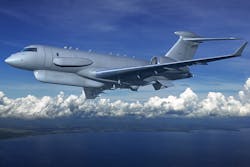Data Fusion Leads to Higher Intelligence
Defense security and intelligence depend on data from sensors on land, at sea, in the air, even in space. The process of organizing large amounts of data from multiple sensors into actionable results is known as multiple intelligence (multi-INT). It can serve many applications, from agriculture and national security to weather forecasts.
Todd Kaiser, technical director for Constellation Management and Protection for Raytheon Intelligence & Space (RI&S), a Raytheon Technologies business, explains how satellites can help: “The data comes in every day, petabytes of it, streaming from instruments on satellites. Computers convert them into images, and analysts use those images to help make decisions in a wide range of areas including national security, weather prediction, and agriculture. But those images alone only go so far.”
Kaiser adds, “While a picture may be worth a thousand words, at the end of the day, a limited amount of intelligence can be pulled from a picture. But, by fusing data from the picture with intelligence gathered from other sources, analysts can get a fuller picture, so to speak.”
By means of cost-effective, high-performance computing integration, high-capacity data storage, and complex algorithms, RI&S is working with commercial companies and government agencies to develop multi-INT technologies to make sense of large amounts of data from different sources. Often, such as for guided missile attacks or tracking small unmanned aerial systems (sUAS), the data must be processed quickly for a response (see figure). “Regardless of the source, if data isn’t quickly fused together and made readily available for analysts to get insights and make decisions, then it’s just noise,” said Kaiser. “Multi-INT sense-making technology helps provide actionable information, enabling our warfighters and intelligence analysts to make the right decisions faster than their adversaries.”
The multi-INT technology includes machine-learning (ML) algorithms to process petabytes of data in seconds and can be applied to many different applications areas. Tom Jones, technical director, Intelligence Production Solutions for RI&S, says: “The benefits of multi-INT sense-making go beyond national security. For example, farmers receive reports providing geo-mapping fused with soil data from sensors. They then take that fused data to determine the health of their crops across their farm and determine exactly where fertilizers or pesticides are most needed.”
In this case, the multi-INT technology aids higher crop yields with reduced costs. As with defense, key decision-making along the way is still performed by humans.
About the Author
Jack Browne
Technical Contributor
Jack Browne, Technical Contributor, has worked in technical publishing for over 30 years. He managed the content and production of three technical journals while at the American Institute of Physics, including Medical Physics and the Journal of Vacuum Science & Technology. He has been a Publisher and Editor for Penton Media, started the firm’s Wireless Symposium & Exhibition trade show in 1993, and currently serves as Technical Contributor for that company's Microwaves & RF magazine. Browne, who holds a BS in Mathematics from City College of New York and BA degrees in English and Philosophy from Fordham University, is a member of the IEEE.
